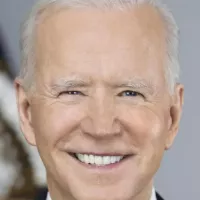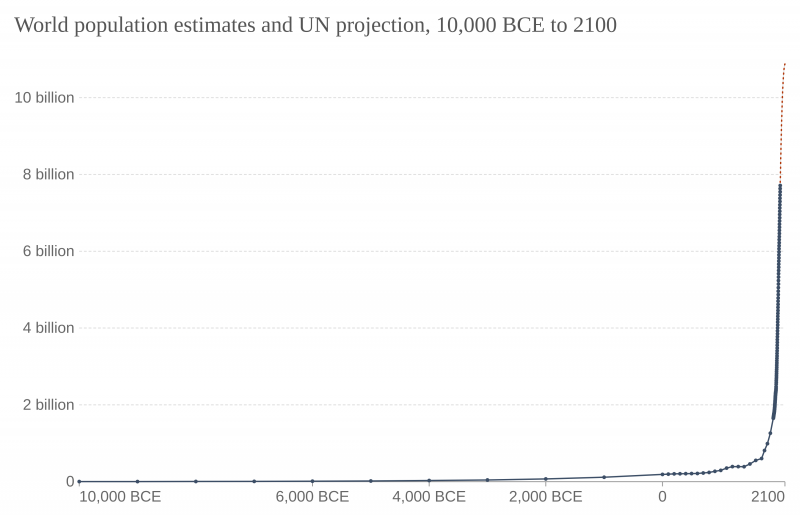Roe v. Wade (1973) was a pivotal U.S. Supreme Court decision that established a woman's constitutional right to an abortion, based on the right to privacy under the Fourteenth Amendment. The ruling effectively invalidated many state laws restricting abortion. It recognized a trimester framework, granting states more regulatory power as the pregnancy progressed. Roe sparked intense and ongoing debate about the legality, morality, and regulation of abortion, significantly influencing American politics and jurisprudence.
1900: Universal Anti-Abortion Laws in the U.S.
By 1900, every state in the United States had enacted anti-abortion laws, thus eliminating pre-quickening abortions. This development marked the culmination of a movement that began in the early 19th century to restrict abortion access.
1905: Lochner v. New York
In his dissent to Roe v. Wade, Justice Rehnquist compared the majority's use of substantive due process to the Court's repudiated use of the doctrine in the 1905 case Lochner v. New York. He elaborated on several of White's points and asserted that the Court's historical analysis was flawed.
1966: Lader publishes "Abortion"
In 1966, Lawrence Lader published his book "Abortion", in which he predicted the possibility of community opposition to legalized abortion would be slight, and that a case carried to a high court could result in a landmark abortion decision.
June 1969: Norma McCorvey Discovers Pregnancy
In June 1969, Norma McCorvey discovered she was pregnant and was selected to be part of Weddington and Coffee's lawsuit. The lawyers told McCorvey "Yes. You're white. You're young, pregnant, and you want an abortion."
1969: Norma McCorvey's Pregnancy
In 1969, Norma McCorvey, using the pseudonym "Jane Roe", became pregnant with her third child and sought an abortion. Because she lived in Texas, where abortions were highly restricted, her lawyers filed a lawsuit challenging the state's abortion laws.
1969: Planned Parenthood supports repealing laws against abortion
In 1969, Planned Parenthood-World Population supported repealing all laws against abortion.
June 2, 1970: Birth of McCorvey's Daughter
On June 2, 1970, Norma McCorvey gave birth to a daughter, Shelley Lynn Thornton, at Dallas Osteopathic Hospital. The baby was subsequently adopted by a couple in Texas.
June 17, 1970: Court Ruling in McCorvey's Favor
On June 17, 1970, the three judges unanimously ruled in McCorvey's favor and declared the Texas law unconstitutional, finding that it violated the right to privacy found in the Ninth Amendment. Yet the Court also declined to grant an injunction against enforcing the law.
1970: Roe v. Wade Reaches the Supreme Court
In 1970, Roe v. Wade reached the Supreme Court after both sides appealed. The Supreme Court justices delayed taking action on Roe and a closely related case, Doe v. Bolton, until they had first decided certain other cases.
December 13, 1971: Oral Argument Scheduled
On December 13, 1971, the full Court scheduled the oral argument for Roe v. Wade. Justices Hugo Black and John Marshall Harlan II retired before the Court could hear the oral argument.
1971: Availability of Elective Abortion and Prosecution of Shirley Wheeler
In 1971, elective abortion was available in several jurisdictions, including Alaska, California, Hawaii, New York, Washington, and Washington, D.C., but not all women could afford to travel to those locations. In 1971, Shirley Wheeler was charged with manslaughter in Florida for having an illegal abortion. Her conviction was later overturned.
March 1972: Ruling in Eisenstadt v. Baird
In March 1972, the court issued a ruling in Eisenstadt v. Baird, a landmark case which applied the earlier marital privacy right now also to unmarried individuals.
May 1972: Douglas Wrote to Blackmun
In May 1972, Douglas wrote to Blackmun stating that there were four judges willing to rule in the majority.
May 1972: Blackmun proposed reargument
In May 1972, Justice Blackmun suggested that the Roe v. Wade case be reargued before the Supreme Court. Justice Douglas considered dissenting, fearing Justices Rehnquist and Powell would uphold Texas' abortion statutes, but was dissuaded by colleagues and his dissent was noted in the reargument order.
June 1972: Douglas memo leaked
In June 1972, a memo written by Justice Douglas to his colleagues regarding the Roe v. Wade case was leaked to and published in The Washington Post before the Supreme Court's decision was released.
October 11, 1972: Case reargued
On October 11, 1972, the Roe v. Wade case was reargued before the Supreme Court. Weddington represented Jane Roe, and Robert C. Flowers represented Texas, replacing Jay Floyd.
1972: Eisenstadt v. Baird
In 1972, Eisenstadt v. Baird was decided.
January 1973: Supreme Court Decision in McCorvey's Favor
In January 1973, the Supreme Court ruled 7-2 in McCorvey's favor, asserting that the Fourteenth Amendment's Due Process Clause protects a woman's right to an abortion. This right was not absolute and needed balancing with the government's interest in protecting women's health and prenatal life. The court also introduced a trimester framework for abortion regulations.
January 22, 1973: Supreme Court decision
On January 22, 1973, the Supreme Court issued a 7–2 decision in favor of Jane Roe (Norma McCorvey), establishing a woman's fundamental right to choose to have an abortion without excessive government restriction. The Court struck down Texas's abortion ban as unconstitutional. This decision was issued alongside Doe v. Bolton, a similar case challenging Georgia's abortion laws.
June 27, 1973: Lawsuit filed concerning the Relf sisters
On June 27, 1973, a lawsuit was filed concerning the Relf sisters, 14-year-old Minnie Lee and her 12-year-old sister Alice Lee, who were sterilized without their knowledge or consent at a federally-funded family planning clinic.
October 1973: March for Life Started
In October 1973, Nellie Gray started the March for Life, an annual event in Washington, D.C., held by opponents of abortion on the anniversary of Roe v. Wade.
October 1973: Planned Parenthood memo concerning opposition to population problem
In October 1973, Robin Elliott circulated a memo to other Planned Parenthood members concerning opposition to "Planned Parenthood's credibility in its reference to the population problem".
1973: Justice Blackmun's Opinion on Abortion Laws
In 1973, Justice Harry Blackmun stated that "the restrictive criminal abortion laws in effect in a majority of States today are of relatively recent vintage".
1973: Response to the decision
In 1973, after the Roe v. Wade decision was issued, the Catholic Church condemned the ruling. Prominent organized groups such as the National Association for the Repeal of Abortion Laws, which later became the National Abortion Rights Action League, and the National Right to Life Committee, responded to the decision.
1973: Public support for abortion rights
In 1973, following the Roe v. Wade decision, Hugh Moore's Population Crisis Committee and John D. Rockefeller III's Population Council publicly supported abortion rights. Legalized abortion was promoted as a means to reduce welfare costs, illegitimate births, and population growth, but this led to conflict with civil-rights leaders who feared it would be used to eliminate non-whites.
1973: Church Amendment
In 1973, the Church Amendment was proposed at the federal level to protect private hospitals objecting to abortion from being deprived of funding. It passed the Senate, then a slightly modified version passed the House, and the final bill passed the Senate. Justice Blackmun supported this and other regulations protecting individual physicians and entire hospitals operated by religious denominations.
1973: Roe v. Wade Supreme Court Decision
In 1973, the U.S. Supreme Court made a landmark decision in Roe v. Wade, ruling that the Constitution protects a woman's right to have an abortion before fetal viability. The decision struck down many state abortion laws and initiated an ongoing debate in the United States about the legality, extent, and moral considerations of abortion.
1973: Fetal Viability and Trimester Framework
In 1973, the plurality in a case found that fetal viability occurred at 23 or 24 weeks, earlier than the 28-week line from Roe v. Wade. They considered fetal viability "more workable" than the trimester framework, abandoning the trimester framework due to its flaws in misconceiving the pregnant woman's interest and undervaluing the State's interest in potential life. Only Justice Blackmun wanted to retain Roe entirely and issue a decision completely in favor of Planned Parenthood.
1973: Advocates describe Roe as vital
Into the 21st century, advocates of Roe describe it as vital to the preservation of women's rights, personal freedom, bodily integrity, and privacy.
1973: Pre-1973 Statutes
Many states did not repeal pre-1973 statutes against abortion, and some of those statutes could again be in force if Roe were reversed.
January 22, 1974: First March for Life
On January 22, 1974, the first March for Life took place in Washington, D.C., marking the first anniversary of Roe v. Wade. The march was started in October 1973 by Nellie Gray and has been held annually since then by abortion rights opponents.
1974: World Population Conference in Bucharest, Romania
During the 1974 World Population Conference in Bucharest, Romania, developing nations argued that developed nations' focus on population growth was an attempt to avoid solving the deeper causes of underdevelopment. They wanted more favorable terms under the New International Economic Order. The final plan omitted fertility targets and instead stated, "A population policy may have a certain success if it constitutes an integral part of socio-economic development."
1974: Justice Blackmun on Roe's Future
In 1974, Justice Blackmun, the author of the Roe v. Wade decision, expressed uncertainty about the case's legacy during a television interview, saying that Roe "will be regarded as one of the worst mistakes in the court's history or one of its great decisions, a turning point."
1975: German Constitutional Court Abortion Decision
In 1975, the Federal Constitutional Court in West Germany rejected the trimester framework in the German Constitutional Court abortion decision, based on the continuous nature of development during pregnancy. The Court found the right to life extends to the unborn from the fourteenth day after conception and allowed for a balance of rights between the mother and unborn child.
1975: Minority Justices on German Constitutional Court Abortion Decision
In 1975, two minority justices in the ruling for the German Constitutional Court abortion decision remarked that "the Supreme Court of the United States has even regarded punishment for the interruption of pregnancy, performed by a physician with the consent of the pregnant woman in the first third of pregnancy, as a violation of fundamental rights. This would, according to German constitutional law, go too far indeed."
1976: Hyde Amendment Passed
In 1976, Congress passed the Hyde Amendment, which barred the federal government from using Medicaid to fund abortions, except in cases of rape, incest, or when the mother's life was threatened.
1976: Planned Parenthood v. Danforth
In 1976, in Planned Parenthood v. Danforth, the Supreme Court struck down portions of a Missouri statute regulating abortion that required prior written consent from a parent for minors or a spouse for married women, and banned saline abortions after 12 weeks of pregnancy.
1977: Floyd v. Anders
In 1977, in Floyd v. Anders, South Carolina's attempt to prosecute a doctor for illegal abortion and murder after he attempted to abort an African American boy at 25 weeks was blocked. The doctor was attempting to perform an abortion on the boy, but the boy was born alive and survived for 20 days before dying. Judge Haynsworth stated the fetus in the womb is neither alive nor a person within the meaning of the Fourteenth Amendment.
1978: NARAL handbook denounces population control
In 1978, a NARAL handbook denounced population control.
1980: Harris v. McRae
In 1980, in the case of Harris v. McRae, the Supreme Court upheld restrictions on abortion funding, including the Hyde Amendment.
1981: Reagan Begins Judicial Appointments
In 1981, President Reagan, who supported legislative restrictions on abortion, began making federal judicial appointments. He denied using a litmus test but emphasized his desire for judges who would interpret, not write, the law.
1981: Joe Biden Votes for Constitutional Amendment Allowing States to Overturn Roe v. Wade
In 1981, then-Senator Joe Biden voted in favor of a constitutional amendment that would have allowed individual states to overturn Roe v. Wade, though he later voted against a similar amendment the following year.
1983: O'Connor Dissents on Abortion Cases
In 1983, Justice Sandra Day O'Connor began dissenting from the Court's abortion cases, arguing that the trimester-based analysis devised by the Roe Court was "unworkable."
1983: Blackmun Interview on Roe v. Wade
In a 1983 interview, Justice Blackmun, the author of the Roe v. Wade decision, expressed annoyance at those who personalized the decision, emphasizing it was a decision of the court. He also mentioned his personal feelings and clarified he was not pro-abortion, but felt the decision was correct constitutionally.
1986: Burger Suggests Roe Be Reexamined
In 1986, shortly before his retirement, Chief Justice Warren Burger suggested that Roe v. Wade be "reexamined".
1987: Bork Nomination Defeated
In 1987, Concern about overturning Roe v. Wade played a major role in the defeat of Robert Bork's nomination to the Court.
1987: Justice Blackmun Writes to Chief Justice Rehnquist
In 1987, Justice Blackmun wrote a letter to Chief Justice Rehnquist.
1988: Canadian Supreme Court Rulings
In 1988, the Supreme Court of Canada used the rulings in both Roe v. Wade and Doe v. Bolton as grounds to find Canada's federal law limiting abortions to certified hospitals unconstitutional in R. v. Morgentaler.
1989: Webster v. Reproductive Health Services
In 1989, in Webster v. Reproductive Health Services, the Supreme Court declined to explicitly overrule Roe v. Wade but upheld several abortion restrictions and modified the Roe trimester framework.
1991: Blackmun on Court's Decision to Hear Roe
In a 1991 televised interview, Justice Blackmun expressed regret about the Court's decision to hear Roe v. Wade and Doe v. Bolton, stating, "It was a serious mistake ... We did a poor job. I think the committee should have deferred them until we had a full Court."
1992: Blackmun Stands By Roe's Framework
In 1992, Justice Blackmun supported the analytical framework he established in Roe v. Wade during the Casey case. He frequently gave speeches and lectures promoting Roe v. Wade and criticizing Roe's critics.
1992: Planned Parenthood v. Casey deliberations
In 1992, during initial deliberations for Planned Parenthood v. Casey, a majority of five justices initially favored overturning Roe v. Wade. However, Justice Kennedy changed his mind, ultimately joining Justices O'Connor, Souter, Blackmun, and Stevens to reaffirm Roe's central holding, justifying the liberty to abort based on an individual's liberty to choose concerning family life and protection from legal enforcement intended to maintain traditional sex roles rather than privacy.
1993: Weddington Discusses Conduct During Roe
In 1993, Sarah Weddington, in a speech for the Institute for Educational Ethics, stated that her conduct during Roe may not have been totally ethical, but she did it for what she thought were good reasons.
1993: District court rejects attempt to justify abortion rights
In 1993, a district court rejected an attempt to justify abortion rights apart from Roe and instead upon the basis that pregnancy and childrearing constituted involuntary servitude.
1995: McCorvey Joins Anti-Abortion Movement
In 1995, Norma McCorvey, formerly known as "Jane Roe", joined and accompanied others in the anti-abortion movement.
1995: Partial-Birth Abortion Ban Act of 1995
In 1995, the Partial-Birth Abortion Ban Act of 1995 was proposed as a federal bill regarding Roe v. Wade.
1995: Highest partisan divide since 1995
In June 2022, the highest partisan divide since 1995 was recorded on the issue of abortion, compared to the mid-1970s and throughout the 1980s when both Democrats and Republicans were closer on the issue.
1998: McCorvey Testifies to Congress
In 1998, Norma McCorvey testified to Congress as part of the anti-abortion movement.
1998: Weddington on Doctors to Abort Fetuses
In 1998, Sarah Weddington said that the lack of doctors to abort fetuses could undermine Roe: "When I look back on the decision, I thought these words had been written in granite. But I've learned it was not granite. It was more like sandstone. The immediate problem is, where will the doctors come from?"
2000: Supreme Court Strikes Down Nebraska's Partial-Birth Abortion Ban
In 2000, the Supreme Court, in Stenberg v. Carhart, struck down Nebraska's law banning partial-birth abortion by a 5–4 vote. Justice Stephen Breyer wrote for the majority, noting that partial-birth abortion "would be the safest procedure" in some cases. Justice O'Connor's concurrence stated that Nebraska was actually banning both abortion methods. Justices Ginsburg and Stevens joined each other's concurrences.
2002: McCorvey Appears in Television Advertisement
In 2002, Norma McCorvey, along with Sandra Cano and Bernard Nathanson, appeared in a television advertisement to persuade the Bush administration to nominate Supreme Court Justices who would oppose abortion.
2003: Congress Passes Partial-Birth Abortion Ban Act
In 2003, the United States Congress passed the Partial-Birth Abortion Ban Act, leading to the lawsuit of Gonzales v. Carhart. This followed the Court's previous ruling in Stenberg v. Carhart that state bans on partial-birth abortions were unconstitutional if they lacked an exception for the health of the woman. The ban in Gonzales v. Carhart was similar to the one in Stenberg but adjusted to comply with the Court's prior ruling.
2003: McCorvey's Sworn Statement
In a sworn statement made in 2003, McCorvey asked if she had what was needed to be part of Weddington and Coffee's lawsuit. She recounted being told, "Yes. You're white. You're young, pregnant, and you want an abortion."
February 22, 2005: Supreme Court Refuses McCorvey's Appeal
On February 22, 2005, the Supreme Court refused to grant a writ of certiorari in McCorvey's appeal, thus ending her attempt to reopen the Roe v. Wade case.
March 9, 2006: Dubay Files Lawsuit
On March 9, 2006, Dubay filed a lawsuit before the United States District Court for the Eastern District of Michigan.
July 17, 2006: Dubay Lawsuit Dismissed
On July 17, 2006, District Court Judge David Lawson dismissed Dubay's lawsuit upon a motion from Michigan's Attorney General, Joel D. McGormley. Dubay's appeal to the United States Court of Appeals for the Sixth Circuit was also dismissed.
2006: Dubay v. Wells Paternity Case
In 2006, the Dubay v. Wells paternity case emerged, where a man argued against being obligated to pay child support for a child he did not want. This case was described as "Roe v. Wade for men".
April 18, 2007: Partial-Birth Abortion Ban Act Upheld
On April 18, 2007, the Supreme Court upheld the constitutionality of the Partial-Birth Abortion Ban Act in a 5-4 decision. Justice Kennedy wrote the majority opinion, asserting Congress's power to ban partial-birth abortion, while leaving the door open for as-applied challenges. The ruling assumed Casey was valid "for the purposes of this opinion" without addressing its continued validity.
2007: Joe Biden Expresses Personal Opposition to Abortion in Memoir
In 2007, Joe Biden stated in a memoir that he was "personally opposed to abortion" but did not believe he had the "right to impose" his views on others.
2010: March for Life Attendance
Until 2010, the annual March for Life in Washington, D.C., commemorating the anniversary of Roe v. Wade, had an approximate attendance of 250,000 people.
2011: State Laws on Abortion
As of 2011, forty-seven states and the District of Columbia had laws allowing certain people to decline to perform certain actions or provide information related to abortion or reproductive health.
2011: March for Life Attendance
In 2011, the March for Life, held annually in Washington, D.C., to protest Roe v. Wade, had an estimated attendance of 400,000 people.
April 16, 2012: Mississippi House Bill 1390 Signed into Law
On April 16, 2012, Mississippi House Bill 1390, a law attempting to make abortion unfeasible without overturning Roe v. Wade, was signed into law.
July 13, 2012: Injunction Against Mississippi House Bill 1390
On July 13, 2012, Judge Daniel Porter Jordan III of the United States District Court for the Southern District of Mississippi granted an injunction against Mississippi House Bill 1390.
2012: Jimmy Carter Reflects on Roe v. Wade
In 2012, former President Jimmy Carter reflected on his stance on abortion, stating that he never believed Jesus Christ would approve of abortions and that he had difficulty upholding Roe v. Wade as president. He urged the Democratic Party to support pregnant mothers and ban abortion except when a mother's life is in danger or in cases of rape or incest.
2012: March for Life Attendance
In 2012, the March for Life, an annual demonstration against abortion held in Washington, D.C., had an estimated attendance of 400,000 people.
April 15, 2013: Second Injunction Against Mississippi Law
On April 15, 2013, Judge Daniel Porter Jordan III issued another injunction, which only applied to a part of the law that required the individual performing the abortions to have hospital admitting privileges.
2013: March for Life Attendance
In 2013, the March for Life, an annual protest against abortion held in Washington, D.C., drew an estimated 650,000 people.
2013: Texas Legislature Enacts Abortion Restrictions
In 2013, the Texas legislature enacted restrictions mandating that abortion doctors possess admitting privileges at a local hospital and that abortion clinics maintain facilities comparable to those conducting outpatient surgery.
July 29, 2014: Fifth Circuit Upholds Injunction
On July 29, 2014, a three-judge panel from the U.S. Court of Appeals for the Fifth Circuit upheld the injunction against part of the Mississippi law, with Judge Emilio M. Garza dissenting.
2014: Senate Judiciary Committee Hearings
In 2014, during Senate Judiciary Committee hearings, views were expressed that the Women's Health Protection Act is unconstitutional or should otherwise be opposed.
February 18, 2015: Mississippi Asks Supreme Court to Hear Case
On February 18, 2015, Mississippi asked the Supreme Court to hear the case regarding the injunction against the state's abortion law.
2015: Obergefell v. Hodges
In 2015, Obergefell v. Hodges was decided.
June 27, 2016: Supreme Court Strikes Down Texas Abortion Restrictions in Whole Woman's Health v. Hellerstedt
On June 27, 2016, the Supreme Court ruled 5–3 in Whole Woman's Health v. Hellerstedt, striking down Texas restrictions enacted in 2013. These restrictions had required abortion doctors to have admitting privileges at a local hospital and abortion clinics to have facilities equivalent to others which conducted outpatient surgery.
June 28, 2016: Supreme Court Declines to Hear Mississippi Case
On June 28, 2016, the Supreme Court declined to hear the Mississippi case, which challenged the injunction against the state's abortion law.
2016: Indiana Passes House Bill 1337
In 2016, Indiana passed House Bill 1337, which regulated the disposal of fetal remains and banned abortions based on sexist, racist, or ableist motives.
2017: McCorvey's Death
Norma McCorvey was part of the movement against abortion from 1995 until shortly before her death in 2017.
2018: Polls in 2018-2019 regarding abortion
2018–2019 polls showed that while 60 percent of Americans generally support abortion in the first trimester, this drops to 20 percent for the second trimester, even though Roe protects the right to abortion until the last weeks of the second trimester.
2018: Mississippi Enacts Gestational Age Act
In 2018, Mississippi enacted the Gestational Age Act, which banned abortions after 15 weeks with exceptions only for medical emergencies or fetal abnormalities. Federal courts enjoined the state from enforcing the law, stating that the law violated the previously established 24-week point of viability.
May 14, 2019: Alabama's Human Life Protection Act
On May 14, 2019, Alabama governor Kay Ivey signed the Human Life Protection Act, which includes exceptions for a serious health risk to the mother or a lethal fetal anomaly, but otherwise it will make abortion a felony for the abortion doctor if it goes into effect.
October 29, 2019: Injunction Against Human Life Protection Act
On October 29, 2019, Judge Myron Thompson for the U.S. District Court for the Northern District of Alabama issued a preliminary injunction against the Human Life Protection Act.
2019: Polls in 2018-2019 regarding overturning Roe
2018–2019 polls showed that 69 percent said they would not like to see Roe overturned, compared to 29 percent who said they would like to see Roe overturned.
2019: Supreme Court Rules on Box v. Planned Parenthood of Indiana and Kentucky, Inc.
In 2019, in an unsigned ruling for Box v. Planned Parenthood of Indiana and Kentucky, Inc., the U.S. Supreme Court upheld regulations concerning fetal remains in Indiana, but declined to review the rest of House Bill 1337, which had been blocked by lower courts. Justice Ginsburg dissented on the part of the ruling about fetal remains, citing violations of Casey, and criticized Justice Thomas's use of "mother" in his concurrence.
June 15, 2020: Mississippi Asks Supreme Court to Hear Dobbs v. Jackson Women's Health Organization
On June 15, 2020, Mississippi requested the Supreme Court to hear Dobbs v. Jackson Women's Health Organization, a legal challenge to the state's 2018 Gestational Age Act banning abortions after 15 weeks.
May 2021: Texas Senate Bill 8 (Texas Heartbeat Act)
In May 2021, Texas lawmakers passed Senate Bill 8, also known as the Texas Heartbeat Act, which bans abortions except in cases of medical emergency as soon as a fetal heartbeat can be detected, typically around six weeks into pregnancy.
May 17, 2021: Supreme Court Certifies Petition for Dobbs v. Jackson Women's Health Organization
On May 17, 2021, the Supreme Court certified the petition for Dobbs v. Jackson Women's Health Organization, limiting the question to whether pre-viability prohibitions on elective abortions are unconstitutional. The case challenged Mississippi's 2018 Gestational Age Act.
September 1, 2021: Texas Heartbeat Act Enforcement Begins
On September 1, 2021, the Texas Heartbeat Act went into effect, and the U.S. Supreme Court declined a request to block enforcement of the law in a 5–4 decision.
October 22, 2021: Supreme Court Declines to Block Texas Law Again
On October 22, 2021, the Supreme Court again declined to block enforcement of the Texas Heartbeat Act and agreed to hear arguments for United States v. Texas on November 1, 2021. They limited the question to a review of standing.
November 1, 2021: Supreme Court Hears Arguments for United States v. Texas
On November 1, 2021, the Supreme Court heard arguments for United States v. Texas, focusing on the review of standing regarding the Texas Heartbeat Act.
December 10, 2021: Supreme Court Dismisses Lawsuit Against Texas Heartbeat Act
On December 10, 2021, the Supreme Court dismissed the lawsuit against the Texas Heartbeat Act on the basis that lower courts should not have accepted it. This decision allows lawsuits against the executive directors of Texas's medical, nursing, and pharmacy licensing boards and also against the executive commissioner of the Texas Health and Human Services Commission, but not certain other lawsuits seeking to overturn the law.
December 26, 2021: Sarah Weddington's Death
Sarah Weddington died on December 26, 2021. Weddington argued the Roe v Wade case on behalf of Jane Roe.
2021: Joe Biden Expresses Support for Roe v. Wade
In 2021, President Joe Biden described himself as "a strong supporter of Roe v. Wade", while also expressing respect for those with differing views on the issue.
2021: Texas Heartbeat Act Sidesteps Roe v. Wade
In 2021, Texas created a legal workaround to Roe v. Wade with the Texas Heartbeat Act, effectively outlawing abortion at six weeks of pregnancy. The Act bars state officials from enforcing the statute and authorizes private individuals to sue those who perform or assist in an illegal abortion, circumventing judicial review and weakening Roe's protections. Other states have since copied this enforcement mechanism.
2021: Poll Results on Roe v. Wade
In 2021, an ABC News/Washington Post poll found that 58% of those with children living at home wanted to see Roe v. Wade upheld, compared to 62% of those without children at home. An All in Together poll found that only 36% with children living in their house opposed the Texas Heartbeat Act, compared to 54.9% without children.
2021: Opinion polls in late 2021
In late 2021, opinion polls indicated that while a majority of Americans oppose overturning Roe v. Wade, a sizable minority opposed overturning Roe but also desired to make abortion illegal in ways that Roe would not permit.
January 2022: CNN Poll January 2022
A January 2022 CNN poll found that 59% of Americans want their state to have laws that are "more permissive than restrictive" on abortion if Roe is overturned, 20% want their state to ban abortion entirely, and another 20% want it to be restricted but not banned.
February 2022: Alito Circulates Draft Opinion
In February 2022, Justice Samuel Alito circulated a draft opinion among the Supreme Court justices, which stated that Roe and Casey should be overruled.
March 2022: Polls in March 2022
In two March 2022 polls, between 61 and 64 percent of Americans said abortion should be legal in most or all cases, while between 35 and 37 percent said abortion should be illegal in most or all cases.
May 2, 2022: Politico Leaks Draft Opinion Overruling Roe v. Wade
On May 2, 2022, Politico published a leaked draft of a majority opinion written by Justice Samuel Alito from February 2022, which stated that Roe and Casey should be overruled. This unprecedented leak sparked protests and was confirmed by the Supreme Court, with Chief Justice John Roberts calling it a betrayal of the Court's confidences.
May 2022: Gallup poll May 2022
A May 2022 Gallup poll showed that 50% of Americans thought abortions should be legal under certain circumstances, with 35% saying it should be legal under any circumstances, and 15% saying it should be illegal in all circumstances, as well as a record number of Americans who identify as pro-choice.
June 2022: Poll Results after Overturning Roe v. Wade
Following the Supreme Court's decision in June 2022 to overturn Roe v. Wade, a new CBC News/YouGov poll showed 59% disapprove of the decision, and of women polled, 67% disapprove. According to the same poll, 52% of the participants called the court's decision a "step backward" for America, 31% said it is a "step forward", and 17% say it was neither.
June 2022: Roe overturned in Dobbs v. Jackson Women's Health Organization
In June 2022, Roe v. Wade was overturned in Dobbs v. Jackson Women's Health Organization, leading to abortion becoming a more important issue for Democrats. A Gallup poll that same month reported that 61% of Americans say abortion should be legal in all or most cases, while 37% say abortion should be illegal in all or most cases.
June 2022: Congregation L'Dor Va-Dor files lawsuit
In June 2022, the Congregation L'Dor Va-Dor filed a lawsuit against a new law in Florida that would outlaw abortion after 15 weeks of pregnancy, arguing that the law violates religious freedom.
June 24, 2022: Supreme Court Overrules Roe v. Wade in Dobbs v. Jackson Women's Health Organization
On June 24, 2022, the Supreme Court ruled 6–3 to uphold Mississippi's Gestational Age Act, and 5–4 to overrule Roe v. Wade and Planned Parenthood v. Casey. Justice Alito's majority opinion stated that Roe was "egregiously wrong from the start" and reasoned that the Constitution does not explicitly protect abortion rights, leading to its return to the people's elected representatives. The dissenting justices argued that this decision threatens other settled freedoms related to bodily integrity, familial relationships, and procreation.
2022: Roe v. Wade Overruled in Dobbs v. Jackson Women's Health Organization
In 2022, the Supreme Court overruled Roe v. Wade in Dobbs v. Jackson Women's Health Organization. The court reasoned that the right to abortion was not deeply rooted in the nation's history and tradition and was not considered a right when the Due Process Clause was ratified in 1868.
January 2023: Gallup Poll on Abortion Policies
A January 2023 Gallup poll found that nearly 7 in 10 Americans disapprove of the country's abortion policies, the highest rate in 23 years.
Mentioned in this timeline

Joe Biden a member of the Democratic Party served as...
CNN Cable News Network is a multinational news organization founded...

Washington D C is the capital city and federal district...

The world population the total number of living humans surpassed...
Germany officially the Federal Republic of Germany is a Western...

The Catholic Church the largest Christian church globally with over...
Trending
Kelvin Sheppard is an American football coach and former NFL linebacker He is currently the defensive coordinator for the Detroit...

Cris Carter is a former American football wide receiver renowned as one of the greatest in NFL history His career...

23 days ago Jonathan Kuminga Trade Rumors: Warriors, Pacers Considering Deals for Forward.

9 months ago Warriors defeat Bucks as Curry rests; Butler III shines in shocking victory.
2 months ago Wole Soyinka's US Visa Revoked: Nobel Laureate Speaks Out Against Travel Ban.

20 days ago Naji Marshall Scores 18 Points and 8 Rebounds in Mavericks Win Against Clippers.
Popular

Ben Shapiro is a prominent American conservative political commentator media...

XXXTentacion born Jahseh Dwayne Ricardo Onfroy was a controversial yet...

Candace Owens is an American conservative political commentator and author...

William Franklin Graham III commonly known as Franklin Graham is...
The Kennedy Center Honors are annual awards recognizing individuals and...

Tucker Carlson is an American conservative political commentator known for...
